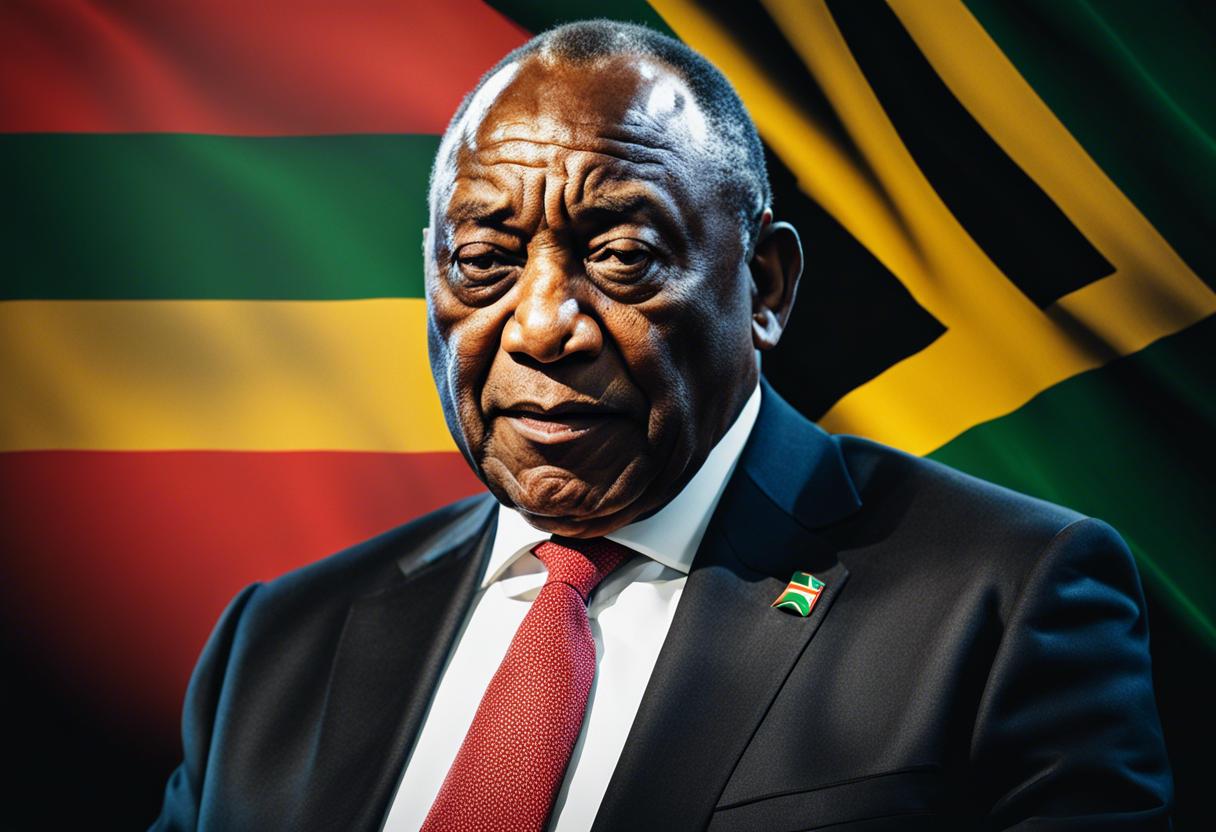Emergency discussions have been initiated between Cyril Ramaphosa, the South African President, and John Steenhuisen, the leader of the Democratic Alliance, in a bid to address a stalemate that arose after the pro-business party voiced its threat to exit the coalition government. The squabble concerning cabinet position allocations has negatively impacted the optimism of investors, which had previously reached a high following the establishment of a national unity government a fortnight ago. The rand took a hit, slipping from R17.87 to R18.46 against the US dollar and the Johannesburg Stock Exchange experienced a 0.6 per cent dip prior to a 0.1 per cent decline at the closing bell.
This stalemate came into existence post Mr Ramaphosa’s decision to not honour the agreed arrangement of handing the potent trade and industry ministry to the DA. The agreement was part of a broader deal which would have presented the DA with six out of thirty cabinet positions, including important roles like the Deputy Finance Minister, albeit less than the initially desired twelve. This decision infuriated Cosatu – a trade union federation allied with the President’s African National Congress and prompted Mr Ramaphosa’s retraction of the offer and the recommendation for the less significant tourism minister post.
A DA insider associated with the discussions quoted that ANC didn’t deliver on its promises. They added that the President should return to the arrangement presented on Tuesday, or the DA will not be a part of the coalition, leaving him to establish a government without them.
Following the previous month’s pivotal elections, wherein ANC lost its majority for the first time since post-apartheid, Mr Ramaphosa’s presidential appointment by the parliament was made feasible solely due to the backing of DA.
In the 400-seat chamber, 159 seats were secured by the ANC while the runner-up DA won 87. DA’s expectations to receive a proportionate share of cabinet positions was a part of the so-called “statement of intent” of constituting a national unity government.
DA’s initial request for 12 seats, inclusive of the deputy presidency, was labelled “preposterous and scandalous” by ANC secretary general Fikile Mblalula. An anonymous business leader expressed that the ANC-DA dispute, prior to the formation of the cabinet, indicated the potential challenges to maintain a stable coalition.
According to sources, veteran ANC members such as Mr. Ramaphosa are endeavouring to uphold the forward-thinking, non-racial vision for South Africa that was put forth by the late President Nelson Mandela. However, the appeal of this post-apartheid reconciliation narrative is dwindling, shared an executive.
He went on to state that the prevailing disregard from earlier ANC constituents, particularly those that veered towards the more extremist parties – Economic Freedom Fighters and uMkhonto weSizwe, both under ex-President Jacob Zuma, for the free-market-focused DA was concerning. The DA’s role as crucial decision-makers, despite its voting figures almost matching the prior election’s 22%, isn’t aiding the cause, he elaborated.
The impasse signals potential issues – whether or not the cabinet positions quarrel can be resolved, coalition dispute resolution procedures aren’t yet in place. This situation intensifies the probability of policy impasse.
Azar Jammine, the founder of the South African firm Econometrix, cautioned that if the DA were to step back from the coalition government, it would have dire economic consequences. The rand could slip below R19 against the US dollar, intensifying inflationary stress and postponing any pro-growth interest rate reductions, he warned.
Jammine further stated that the markets have clearly indicated that the more involved the DA gets in the new government, the more likely we are to see investor-friendly policies, which would in turn stimulate job creation and economic growth. This information was originally published by The Financial Times Limited in 2024.

